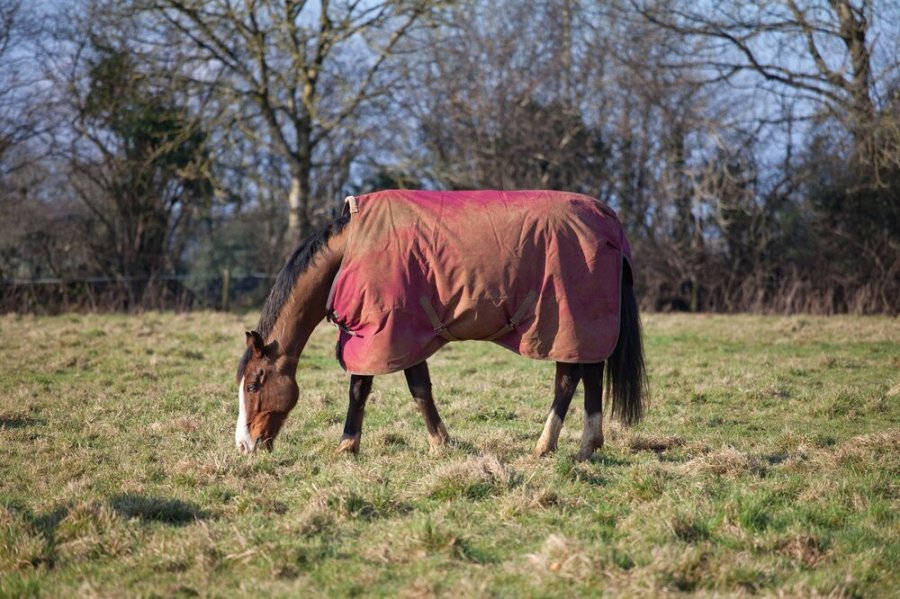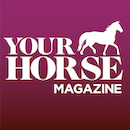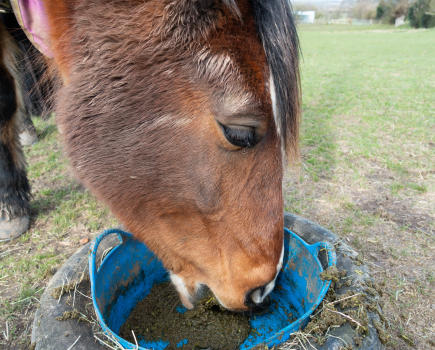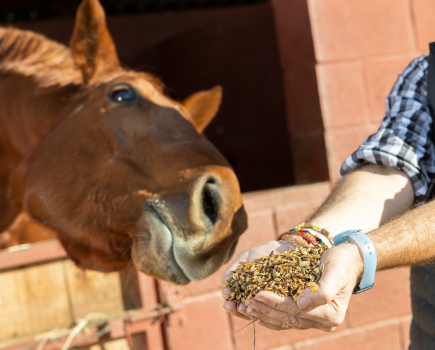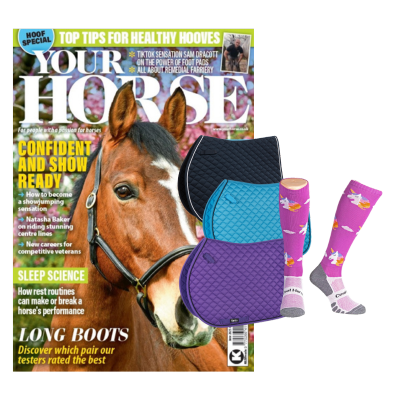Horses evolved to feed naturally on nutrient-rich meadow grasses and herbs, wherever and whenever they could find them. It is important to understand and use this knowledge when taking care of a horse, in order to keep them in peak health and condition. They are anatomically built to digest crude fibre, having large, broad cheek teeth with rough chewing surfaces that can grind even hard grasses.
Today, however, most horses lead domesticated lives in pastures and stables. Agriculture has also undergone major changes. Our biodiversity is increasingly in decline, and the lack of minerals and vital substances is leading to many meadows and pastures becoming impoverished. This means that horses often don’t get the kind of food they are meant to eat and so are dependent on the foodstuffs we give them.
The nutritional basis for our horses is roughage (hay, haylage, straw or grass pellets and chaff). Such feed should always be available — in good quality and, above all, in sufficient quantities. In nature, horses spend up to 18 hours a day eating. Their stomachs are relatively small and need to be constantly filled up with small amounts of food.
Feeding the modern horse in this way presents a great challenge. The keeping and uses of horses have changed over the centuries, but their digestive systems have not. Ideally, they should be supplied with frequent small meals throughout the day, primarily roughage and a small amount of concentrate or supplementary feed if needed.
Why roughage rules
Roughage products provide a solid foundation: they satisfy the horse’s biological need to chew and take considerable time to consume. Due to the large quantities a horse requires daily (a horse weighing 600kg needs approximately 9kg of roughage), it is recognised that roughage products must form the foundation of each and every horse’s diet.
To maintain or restore healthy intestinal flora, the micro-organisms found in the large intestine are dependent on an intake of sufficient amounts of high-quality fibre. However, roughage is not only important for healthy digestion, but also for a horse’s psychological wellbeing. A long-term lack of high-fibre roughage can have far-reaching effects on a horse’s health (including destruction of intestinal flora, colic, watery stools and emaciation).
The feeding of contaminated or decaying roughage, or excessive amounts of grain, can lead to considerable digestion problems, like colic, as well as putting strain on the horse’s entire body. Cereal-free feeds for horses have become a popular choice. It is not, however, a new trend, but corresponds to the natural diet of horses over millennia.
As we have already mentioned, horses are built to constantly consume fibre-rich and low-energy food, and in natural habitats they consume only small amounts of grain through seeds. On the steppes they fed on grasses, herbs, foliage and, to a lesser extent, grass seeds.
Why field time is essential
The most natural way of providing horses with roughage as well as nutrient-rich herbs and different grasses is to turn them out. This pasture must be intact and diligently maintained to be a good source of food with adequate space for a horse to exercise.
Many fields have previously been used as farmland and are therefore lacking in biodiversity. Feeding a horse as nature intended, therefore, means that the pasture must be kept healthy and biodiverse. Even during the cold and wet winter months, horses should be allowed to graze for at least a few hours so that they can exercise their innate eating behaviours. Hay can also be provided if the pasture is low on forage.
A horse’s long-term physical and psychological health also depends on him being able to exercise and move around freely. The more a horse can move freely outdoors, the more satisfied and mentally balanced he will be, even in winter.
About the writer: Daniela Hanke is a feeding advice, research and development team member for Agrobs GmbH

